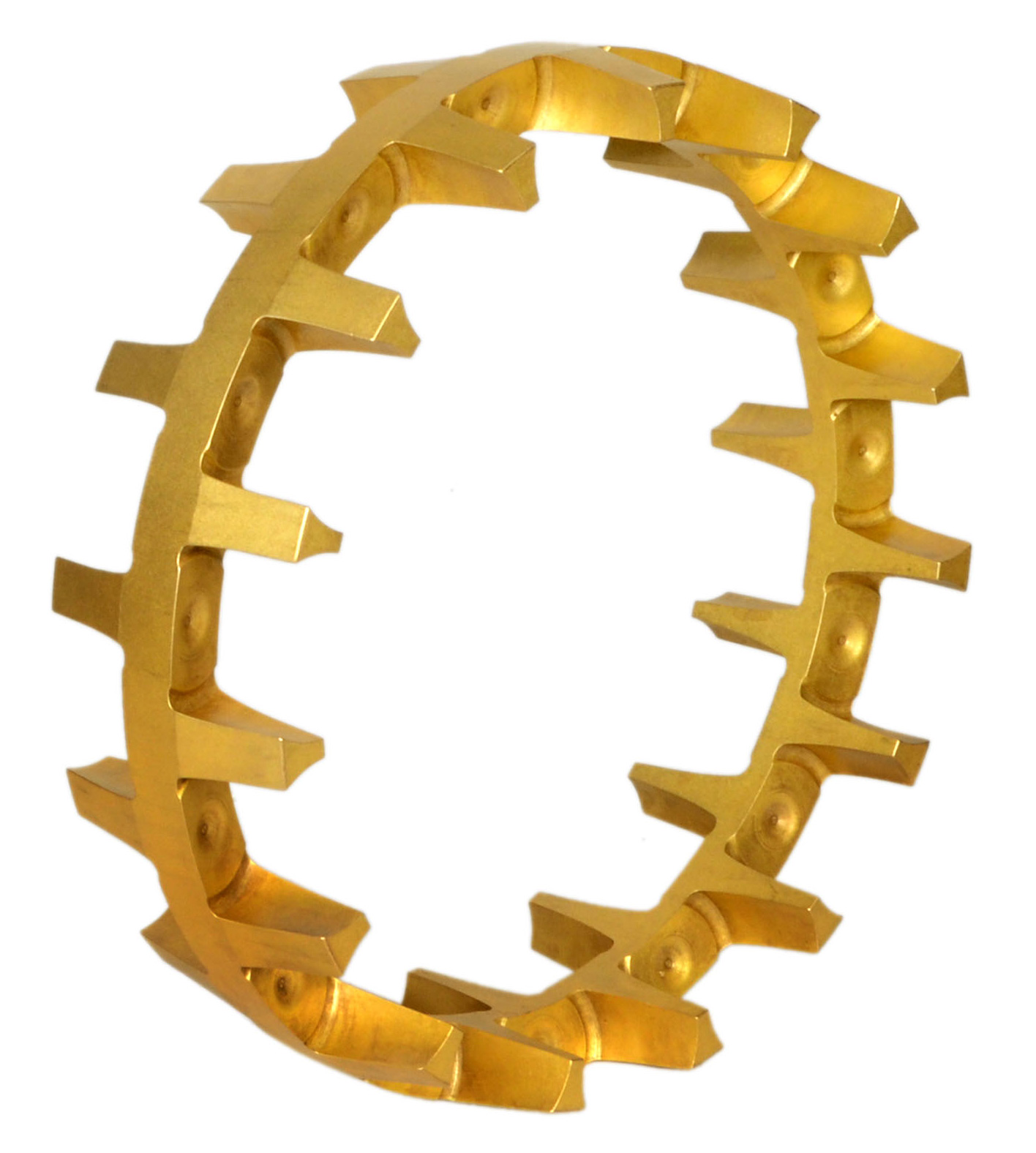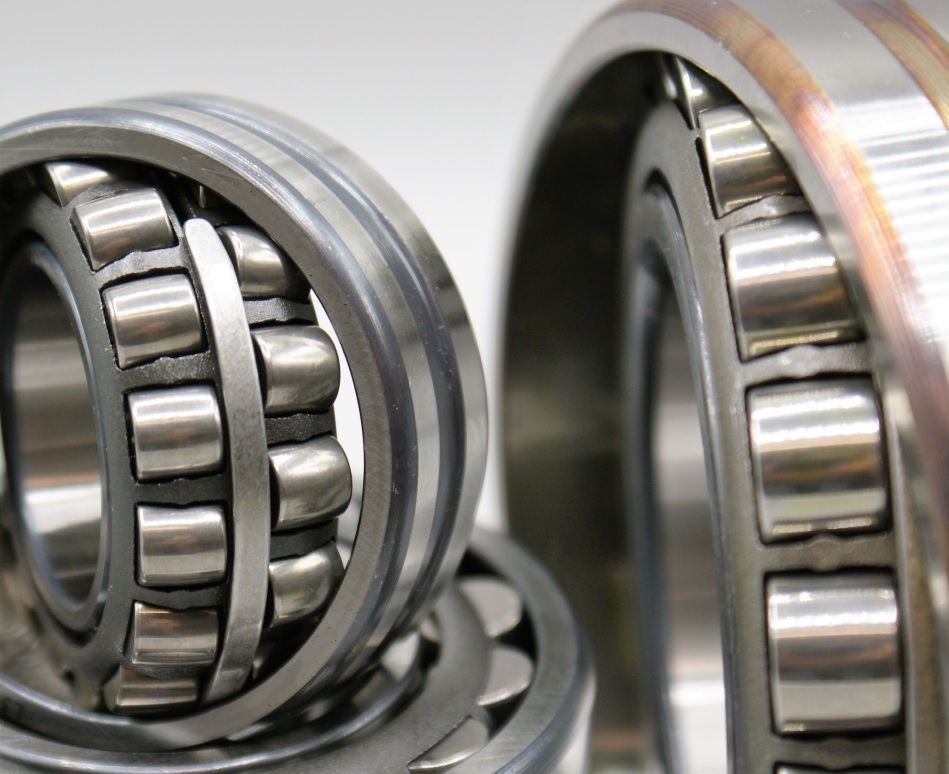Although the bearing is composed of many parts, the cage can also be said to be the “blood vessel” of the bearing. Therefore, in the performance of the bearing, the material of the cage is directly related to the efficiency of the bearing. The bearing cage is a bearing part that wraps all or part of the rolling element and moves with it to isolate the rolling element. It usually guides the rolling element to keep it inside the bearing.
When the rolling bearing is working, especially when the load is complex and the rotation is high-speed, the cage must withstand great centrifugal force, impact and vibration. There is a lot of sliding friction between the cage and the rolling element, and a lot of heat is generated. The combined effect of force and heat will cause the cage to fail, and in severe cases, it will burn and break. Therefore, the cage material is required to have good thermal conductivity, good wear resistance, low friction coefficient, low density, a certain combination of strength and toughness, good elasticity and stiffness, and a coefficient of expansion similar to that of the rolling element. And good processing performance. In addition, the cage is also affected by chemical media, such as lubricants, lubricant additives, organic solvents and coolants. Browse our extensive and detailed product catalog
The main role of bearing cages is to: keep the rolling elements at an appropriate distance from each other, avoid direct contact between adjacent rolling elements, and keep friction and the resulting heat to a minimum; keep the rolling elements evenly distributed in each bearing, so that the load can be evenly distributed in each bearing and reduce noise; make the rolling elements properly guided in the load-free zone, improve the rolling conditions in the bearing, and avoid destructive accidents;
Classification of bearing cages
Commonly used cages are mainly divided into metal cages and non-metallic cages according to the type of material, as well as composite cages, etc. Special-purpose bearing cages should also meet the requirements of special working conditions, such as high temperature resistance, corrosion resistance, self-lubrication (used in vacuum) or non-magnetic.
The main difference between brass cage bearings and steel cage bearings is the material used for the cage, which affects various performance characteristics. Here is a detailed comparison:
Material
Brass cage bearings: These bearings are made of brass and have good corrosion resistance. They are usually used in humid or chemical environments. Brass is also relatively light.

Steel cage bearings: These bearings are made of steel and are usually stronger and can withstand higher loads. However, they may be more susceptible to corrosion unless they are coated.
Strength and Durability
Brass Cage Bearings: Generally have good wear resistance and can handle moderate loads. They tend to be more brittle than steel, which can limit their use in high-stress applications.
Steel Cage Bearings: Have higher tensile strength and durability, suitable for heavy-duty applications. They can withstand greater shock loads and are less likely to deform under pressure. NSAR provides customers with brand cooperation and customized bearings to meet the different needs of customers.
Temperature Resistance
Brass Cage Bearings: They perform well in moderate temperatures, but may degrade or lose strength in extremely high temperatures.
Steel Cage Bearings: Generally have high temperature resistance, making them suitable for applications where heat generation is a concern.
Noise and Vibration
Brass Cage Bearings: Generally quieter during operation due to the material’s shock-absorbing ability.
Steel Cage Bearings: May generate more noise and vibration, especially under heavy loads.
Cost
Brass Cage Bearings: Generally more expensive than Steel Cage Bearings due to the cost of brass and the manufacturing process.
Steel Cage Bearings: Generally more cost-effective, making them a popular choice for many applications.
Brass cage bearings: commonly used in precision instruments, electric motors, and applications where weight and corrosion resistance are critical.
Steel cage bearings: widely used in automotive, industrial machinery, and heavy equipment applications where strength and load capacity are critical.

Factors to consider when selecting bearing cages
Working environment: The working environment of the bearing has a great influence on the material of the cage. For example, in high temperature environments, high temperature resistant materials such as steel or phenolic tape cages should be selected; in corrosive environments, corrosion resistant materials such as copper or nylon cages should be selected.
Bearing type: Different types of bearings have different cage materials. For example, deep groove ball bearings, spherical roller bearings, and tapered roller bearings usually use steel cages; while cylindrical roller bearings can use copper or nylon cages.
Speed and load: Speed and load are also important factors in selecting cage materials. Under high speed and heavy load conditions, high-strength, wear-resistant, and corrosion-resistant materials such as steel or copper cages should be selected.
Economical: Economic factors should be considered while meeting performance requirements. Some lightweight, low-cost materials such as engineering plastics are suitable for light loads, low speeds, and high temperatures.
Other factors: In addition, the size, shape, processing method, and installation requirements of the cage must also be considered.
Copyright © NSAR Bearings. All rights reserved. Privacy Policy